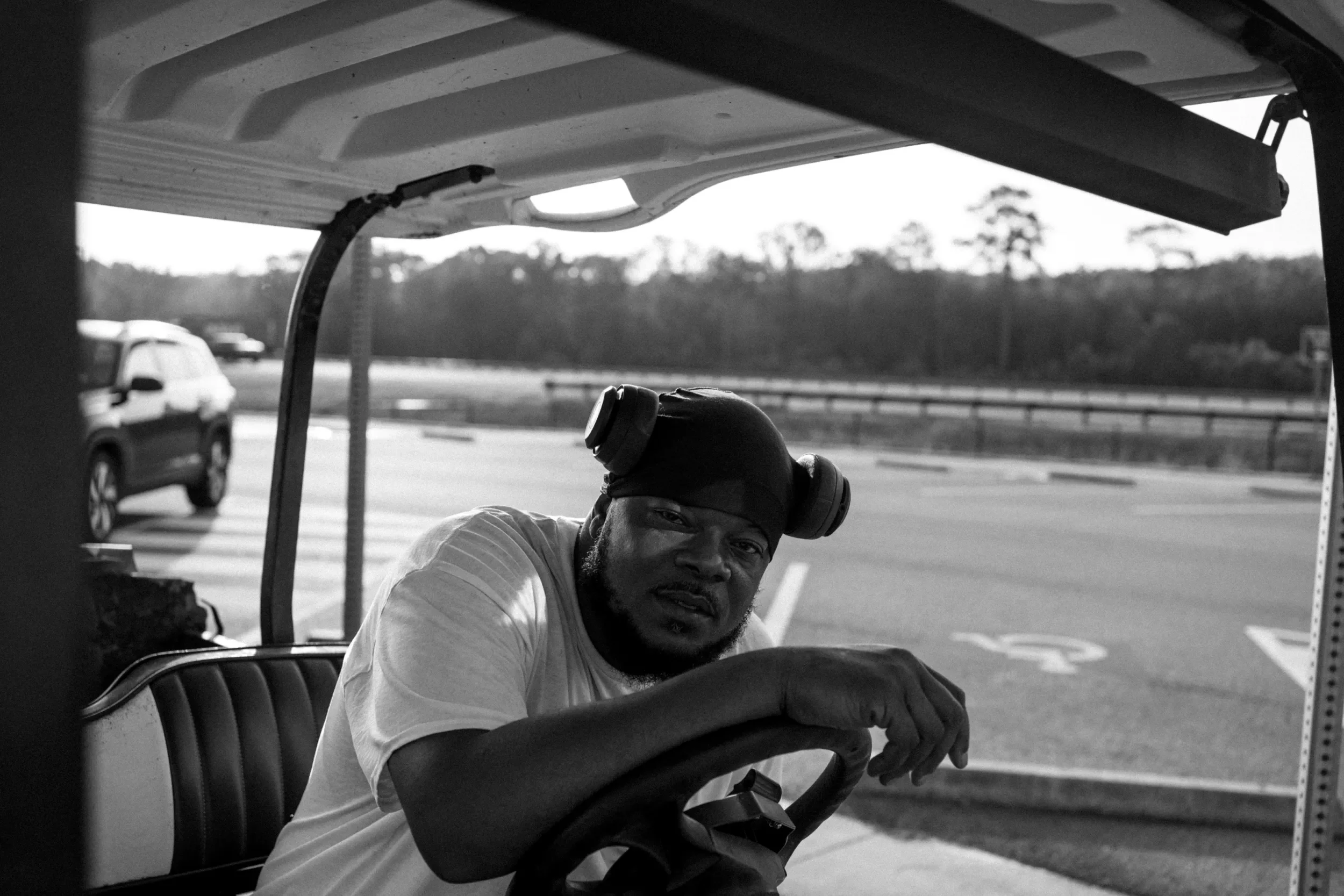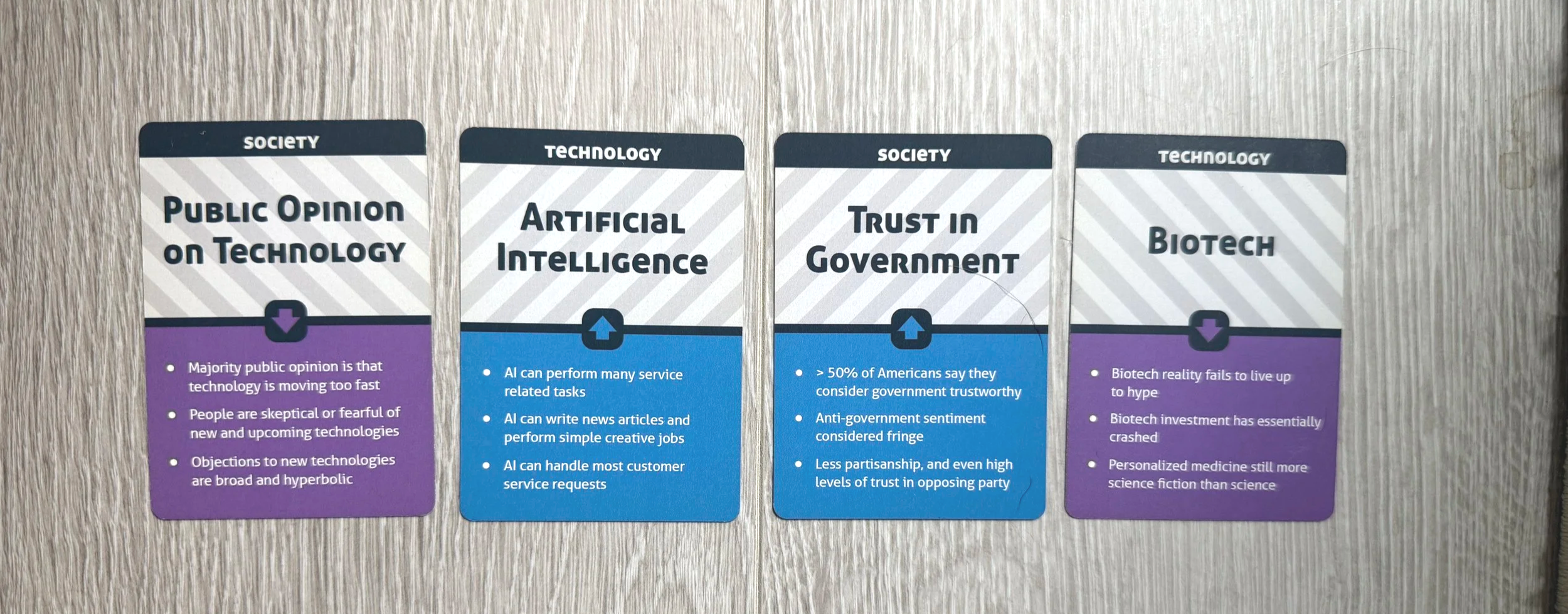Ley Lines Issue #2: Pattern Disruption, Burnout, Photography
Greetings, Wanderer.
Welcome back to Ley Lines.
Ley Lines #2: America, Burnout, Photography
2.1 Conversations on the I-95 I’m not sure where I found it but I’ve had this long-form essay from a publication called The Atavist open as a tab on my browser for a few weeks. It’s written by a woman who spent about weeks travelling an American highway and interviewing the people she met while her son took photos, many of which are haunting and included in the article.
Related to this, I had to look up what the word “Atavistic” meant: relating to or characterized by reversion to something ancient or ancestral.
I’ve Gone To Look For America - Atavist Magazine
2.2 This Isn’t Burnout I’ve been reflecting a lot about it means to work in the advertising and marketing industry in 2025. I’ve been reflecting a lot on it since at least 2019, when I wrote a satirical trends deck about the state of the industry. Of the year 2022, I predicted:
“The planet is burning to the ground on one side and drowning on the other while some of the world’s greatest minds sit in air-conditioned boardrooms drinking pitchers of ice water and room-temperature soda as they discuss the exact role their client’s brand plays for consumers during the End of Days.”
Polina Zabrodskaya wrote a piece more grounded in reality and feeling, but with. Her observations about what’s causing the state of general dissatisfaction the industry can be summarized in three points:
1.) Our Creativity Is Being Used Against Us
2.) We Are Structurally Torn
3.) We’re Confronting Our Own Mortality
Of the three, it’s the first one that stood out the most to me and how I’m feeling:
“Your creative life-force, the most personal part of you, is exploited to sell commodities, often at horrific social and ecological cost. You are paid to betray the deepest parts of yourself. And, to add insult to injury, you’re often told to call that work ‘purposeful’ when everyone understands full well that the only real purpose is to make the shareholders richer.”
This Isn’t Burnout - Why Your Creative Job Isn’t Fun Anymore
2.3 Mickervision One of my friends recently got into photography. He’s always had a good eye for design, but also for noticing interesting people around.
Via @MickerVision on Instagram
It’s been fun following his photography as he keeps getting better, but also with a running group chat between a few of us about lighting and photograph techniques.
MickerVision on Instagram
(seeing his photos also inspired me to upload photos from our time together 20 years ago)
2.4. Break Social Media I love ideas that that “break”* the functionality of the platforms that they’re used on. Two great examples of this that I’ve seen lately are the “Finger Wag” Instagram videos that make it feel like you’re controlling the action and the “Raving Rat” that uses the carousel-scroll feature to animate static images.
Both break the fourth wall, and force us to be part of the content piece.
The best example of all time of this is Pyscho Mantis in Metal Gear Solid.
And the second best is Subaru Canada’s “Choose Your Angle” videos that that used hundreds of the YouTube annotations to allow viewers to switch their shot angle in real-time (unfortunately the annotations feature has been deprecated).
Another great way to describe this is “Pattern Disrupting”.
2.5 Scenario Planning For The Future I love the concept of integrating play and gaming with work. Cards are an easy way to do that: Wash-a-Pig's system of cards for coming up with fun headlines is a great way to break out of a rut. Pip Decks has produced a ton of awesome card systems (I've used the Presentation Tactics one pretty regularly).
A sample of cards from Working Futures.
But the Working Futures deck by the Copia Institute and techdirtblog is more than just cards. They created a system for scenario planning and thinking about the future.Each card in the deck is double-sided, with one side representing a potential positive impact or use of technology, culture, or behaviour and the opposite side representing the negative. There is no way to "play" the game, but the idea is to lay a series of cards down on the table, some face-up and some face-down. The group then discusses what sort of world this would be.
The creators of this game held a working session with these cards, and used that to create a series of briefs (or scenarios) that then informed short stories by Science-Fiction authors.
Is it an efficient process? No. But it will likely lead to more interesting thinking and outputs than any other process. And is more enjoyable to participate in and digest.
Working Futures Site (Cards, Briefs, Book)
That’s it for this edition of Ley Lines. Thanks for reading. Or you’re welcome for the content.
If you liked this then let me know - drop me a line here on the site or leave a comment here on the post.








Heatwave and poison